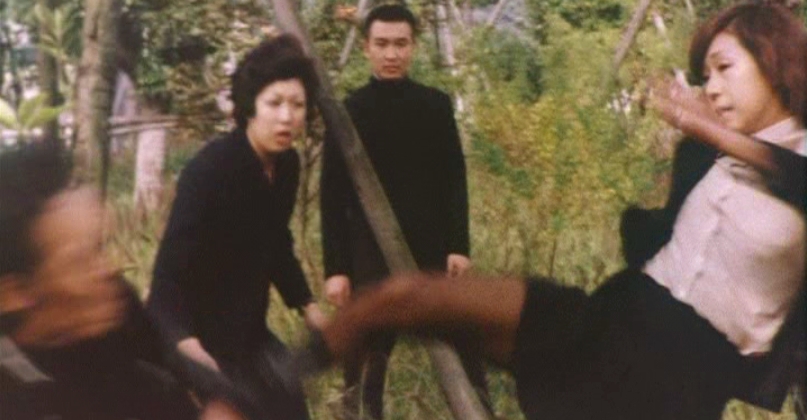
After Purima Kikaku’s success with their three “Document Porno: Sukeban” films they would move onto a new format for their next attempt at the sukeban genre – the “semi-document”. Whereas the document porno films would portray the action as a mockumentary accompanied by a narrator to sell the illusion of reality; “Semi-Document: Sukeban Bodyguard” would drop these conventions and present itself far more like a normal roman porno film in order to tell a better story and allow more artistic flourishes.
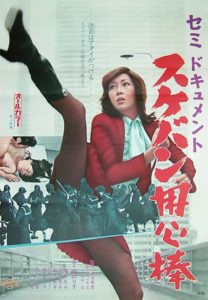
At first glance the semi-document tag seems misleading – normally semi-documentaries are dramatisations of actual events, though there is no claim that any of the events actually happened nor that any of the characters are based on real life counterparts. Without any concrete claims to realism it feels more like a sequel to Nikkatsu’s earlier “Sukeban SEX Violence“, albeit with a much lower budget. That being said the film does have a unique feel to it and is far grittier than its contemporaries. The highlights of the film are scenes which take place on the streets and this is what sells the “document” vibe that the filmmakers were clearly aiming for. These scenes are as realistic as it gets and it appears they have been shot guerrilla style possibly without legal permission – the crew have very clearly walked onto a street and set up a tripod with little to no regard to anyone else. The noise of distant cars fills the background and in the busy city scenes a crowd of people going by their business quickly gathers around the action. At first some people seem concerned about girls slapping each other around in the open air, then once they catch sight of the camera their concern quickly turns to intrigue; no doubt the director was gesticulating at them to act normally.
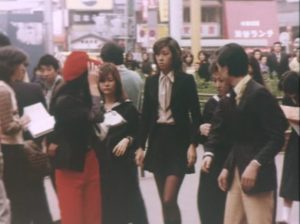
The story is fairly typical for most sukeban films – after two girls from the Kanto Asagaya gang are assaulted by their rival Sobu gang, a war is ignited and following this attack both gangs meet up for a fight where our main characters, the Kanto Asagaya gang, are quickly overwhelmed. Fortunately Osumi, an acquaintance of the boss, is passing by and joins in eventually swaying the battle in their favour with her use of a straight razor. After the victory she is initiated into the gang as a “bankaku” (a chief whose job is to provide the muscle and act as a bodyguard for the boss) with a very over-the-top yakuza-esque ceremony which is quite hard to take seriously. Two members of the rival Sobu gang are captured and tortured in revenge for the earlier attacks which does nothing but further increase tempers between the two. The rest of the film focuses on sukeban antics of the Kanto Asagaya gang such as blackmail, intimidation and prostitution which have all been shown a million times in pretty much every sukeban film up until that point; as well as each gang taking various pot-shots at each other.
The final act focuses on the gang hosting an orgy in an abandoned theatre where they pimp out their own members to the highest bidder. This is soon broken up police after a tip off and the gang quickly scatter with Osumi forced to tear up floorboards in order to make her escape. The finale then appears out of nowhere and falls flat with no real confrontation: two leaders of the Sobu gang get stabbed in a crowd on a busy scramble crossing which is presented as the ultimatum. There is no catharsis and it doesn’t feel earned since there is no build-up, rather it seems that they were running out of film and just needed to end it. There is no real story arc behind the film, it consists mainly of random events stitched together relying on a constant pace rather than interesting storytelling or tension to hold the viewers’ attention.
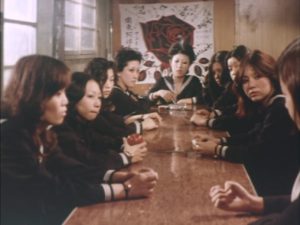
The main issue with the film is the lack of characterisation. None of the characters are given any real depth or backstory and we never see if they have a regular life; presumably they must do something when they’re not fighting but there is no sign of a home life or parents. Similarly, all of the girls except Osumi wear sailor suits so they must go to school at least sometimes, though again there is no sign of this. Possibly the most egregious omission is a backstory for the sukeban bodyguard of the title: Osumi. Whilst actress Noriko Igarashi embodies the character perfectly with her cocky sneer, bitchy line delivery (clearly inspired by Akiko Wada in Stray Cat Rock) and physical presence (she is at least 6 inches taller than most of the other girls excluding her high heeled boots), it is difficult to regard her as the protagonist since so little is known about her. Being meaner than everyone else and capable of beating most in a fight is not enough to make a compelling main character. By giving such an underdeveloped character so much screentime the rest of the film ends up ignoring a number of potentially interesting side characters.

Whilst there is only a small amount of violence in the film, especially compared to Toei’s pinky violence genre, the few instances of it end up being spectacularly brutal. This is where the grittiness really comes into its own by elevating seemingly minor fights into extreme displays of viciousness. The film begins with a cold opening of two gang members being chased into a tunnel, though instead of a pre-planned attack the events are far more what you would expect of teenage girls. It is very scrappy with them getting shoved up against the walls and kneed in the gut, their attackers are not properly armed so in this case a stray bottle is smashed and used by one to savagely stab her victim between the legs. Possibly the most brutal scene comes later in the film where a girl is r*ped by the Sobu gang as punishment, then beaten for 2 minutes straight, each punch harder than the last. With one final well-aimed thump to the stomach the audience sees the exact moment her internal organs are damaged and the only sound is the sickening splattering of blood on the tatami mats as it drains from her mouth. Witnessing such a drawn-out beating is a shocking sight even amongst the more extreme sukeban films and feels far too realistic for comfort.
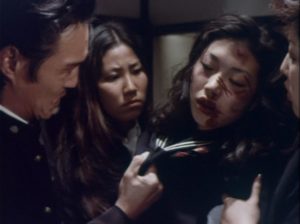
Despite being a spiritual successor for the document porno series and having a large number of sex scenes throughout, “Sukeban Bodyguard” is not an erotic film. Sex in this film is used purely as a method of punishment or of prostitution and there is not a single scene of lovemaking to be found; sex in the world of these girls is just an act and carries no emotional impact. The closest we get is when the girls decide to blackmail a businessman. They set up a scenario in which he is forced to take their “injured” friend home, where she then seduces him. Little does he know that she is carrying a hidden microphone to record everything. Whilst this happens two other girls from the gang are sitting with their boss in a car outside listening to her having sex on the radio, during which they get a little overexcited and eventually end up masturbating to the sounds. Whilst the scene is no doubt intending to further the stereotype that delinquent girls are promiscuous and sexually aggressive, it does have a certain comedy to it with the girls not really sure if they feel comfortable engaging in such activities sitting so close to each other, before giving up all pretences. Eagle eyed car fans will also notice that when the car drives away it is shown to be a Nissan Skyline 2000 GT- a very expensive car at the time which would have definitely had to have been stolen by the girls.
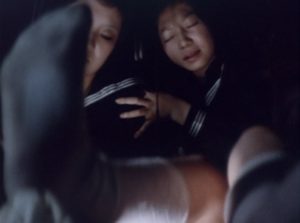
The film is shot surprisingly well, it could be easy to assume the “semi-document” tag would be used as an excuse to just use a single angle for each scene, though the director manages to squeeze in some excellent framing as well as a handful of creative shots throughout without losing the onus of it being a rough and ready urban drama. Wide shots are used to full effect to give scenes a very dynamic staging, however they are largely neutered by the bizarre decision so present the film on DVD in a cropped 4:3 format – slicing away half of screen.
Perhaps the most unique part of the film which puts it above literally every other sukeban film made during the period in terms of realism is the cast, or more specifically, their appearance. Several girls in this film have shaved or thinned eyebrows which is a big deal. This was the absolute height of sukeban fashion and culture at the time and something which was never normally shown in films; presumably no actress would be willing to shave her eyebrows and risk jeopardising any future roles just for a low budget sukeban film. By using no-name actresses they were finally able to persuade some of the cast to part with their eyebrows; it also allowed them to cast some very average looking girls. Without sounding too shallow, none of them really come close to challenging Toei’s glamorous starlets such as Reiko Ike, Miki Sugimoto and Reiko Oshida which very much works in the film’s favour when seeking realism, especially with one actress having a very real scar across her brow and down the side of her face. Every single gang member looks like they’ve been dragged up on the streets and probably resemble most real life sukebans the viewers might have seen hanging around street corners.
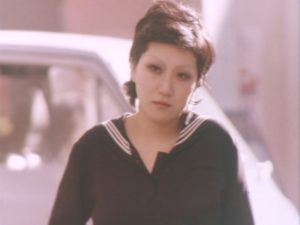
Maybe if the film was released earlier, it could have made more of an impact but by January 1974 the sukeban genre was already becoming exhausted and every single event in the film had been shown in a number of better films beforehand. It essentially devolves into becoming a box-ticking exercise of including the stereotypical sukeban themes whilst attempting to use its “semi-document” brand of grittiness to try and breathe life into a hackneyed tale. I think the film potentially falls foul to director and writer Tadashi Sasaki’s inexperience and at this early stage in his career it was perhaps too ambitious of a project. Up until this point he had only worked on document porno films (including two of the “Document Porno: Sukeban” films) so I think it is telling that the best parts of the film are the street scenes which are shot more in line with the previous documentary style he was used to. Overall, it is an unremarkable film though has just enough style to warrant a watch if you are a sukeban cinema completionist.
More Film Reviews
“It’s not my fault that I’m Japanese… yet it’s my greatest sin that I am.” -The Human Condition I: No Greater Love (1959) During the Second World War, Unit 731… “You become what you believe” seems to be an enthusiastic phrase until you watch Josh Stifter’s black comedy horror Greywood’s Plot. Born out of a low-budget production and undying devotion… Bringing you more found footage and POV horror than you can shake a stick at, Unnamed Footage Festival is back at it once again with an incredible lineup for 2023…. If you are a lifelong fan of horror, then you know full well that endless sequels and remakes are just a part of the game when it comes to film…. The international shorts on offer at this year’s Toronto After Dark Film Festival are among the strongest of the entire lineup. From a bizarre reunion with a lost family member… The Guyver is a 1991 American live-action tokusatsu sci-fi horror, written by Jon Purdy, and directed by Screaming Mad George and Steve Wang. The film is an adaptation of the…Philosophy of a Knife (2008) Film Review | An Extreme Horror Documentary
Greywood’s Plot (2020) Film Review – A Low Budget Exercise of Creativity
Unnamed Footage Festival 666 (2023) Short Films Collection- A Short, Sharp Shock to the System
V/H/S/85 (2023) Film Review – Be Kind, Rewind
TADFF 2023 International Shorts Feature [Toronto After Dark Film Festival]
The Guyver (1991) Film Review – Early Western Anime Adaptation

Hi, I have a borderline obsession with Japanese showa-era culture with much of my free time spent either consuming or researching said culture. Apparently I’m now writing about it as well to share all the useless knowledge I have acquired after countless hours surfing the web and peeling through books and magazines.

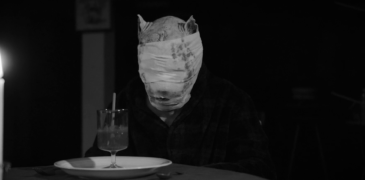

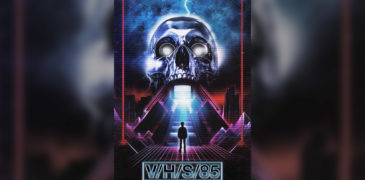
![TADFF 2023 International Shorts Feature [Toronto After Dark Film Festival]](https://www.grimoireofhorror.com/wp-content/uploads/2023/10/TAD23_IntlShorts_1920x1080-1-365x180.jpg)
